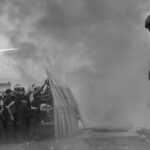
The ilium has a unique shape, with a large, fan-like projection that forms the upper part of the hip bone. This projection, known as the iliac crest, is easily palpable and serves as an attachment point for several muscles, including the abdominal and gluteal muscles. The iliac crest also acts as a protective barrier for the internal organs of the abdomen and pelvis.
Another important feature of the ilium is the iliac fossa, a concave surface on the inner side of the bone that serves as an attachment point for the iliacus muscle. This muscle plays a key role in stabilizing the hip joint and helping with movements such as flexion of the thigh.
In addition to providing structural support, the ilium also plays a crucial role in weight-bearing and locomotion. The iliac tuberosity, a small bump located on the outer surface of the ilium, acts as an attachment point for the iliotibial band, a thick band of connective tissue that helps stabilize the hip joint and assist with movements such as walking and running.
In terms of function, the ilium works in conjunction with the other bones of the pelvis to support the weight of the upper body and provide stability for the pelvic organs. It also serves as a point of attachment for several important muscles that are involved in movements such as walking, running, and jumping.
Overall, the ilium is a key bone in the human body that plays a crucial role in providing stability and support to the pelvic area. Understanding the structure and function of the ilium is essential for anyone interested in the study of human anatomy, as it helps to provide a deeper understanding of how the body works and moves.
































Add Comment